XRF test results for Mikasa Intaglio CAC 29 “Garden Harvest” pattern bowl, purchased in 1995
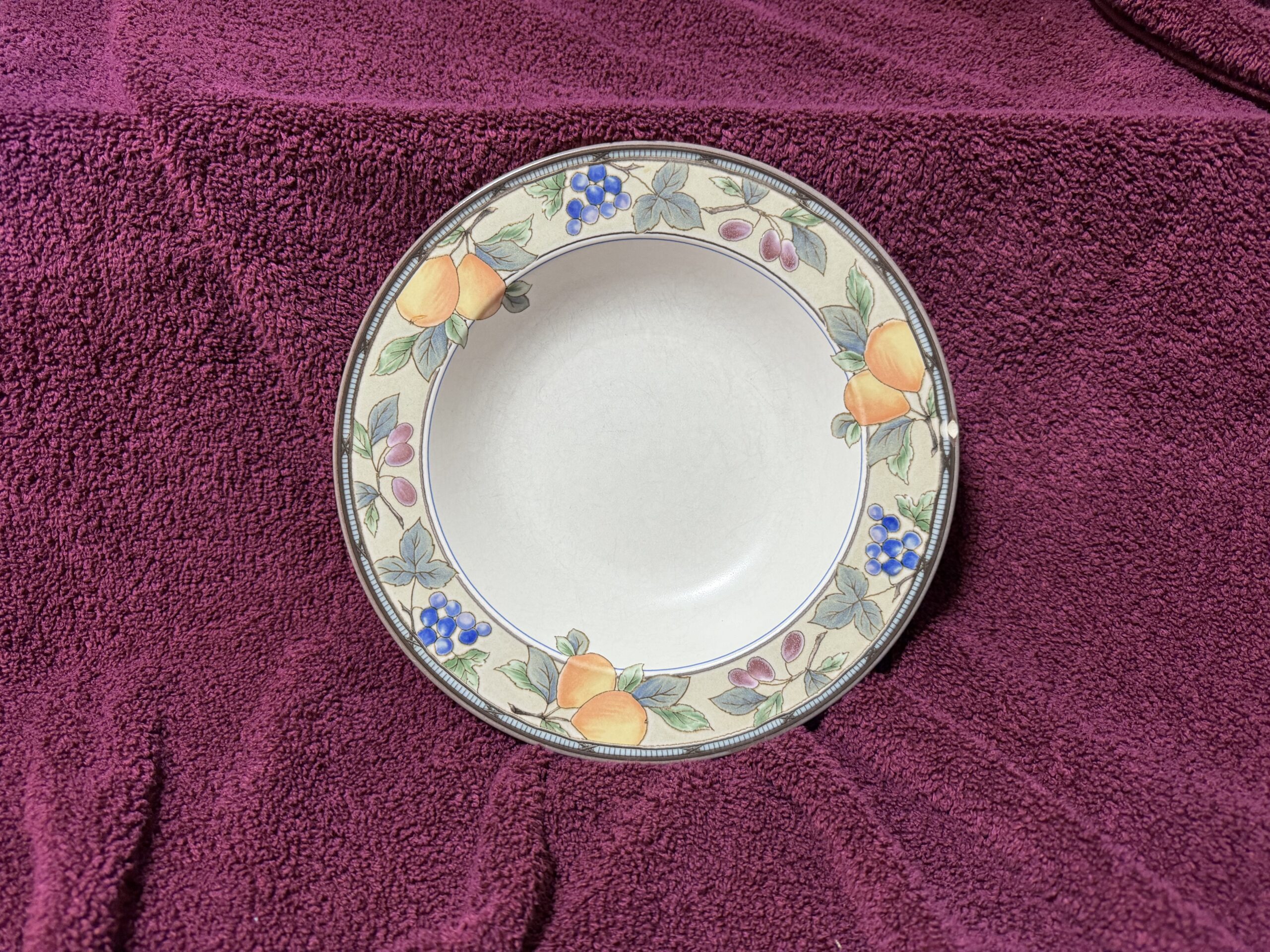
For those new to the Lead Safe Mama website:
Tamara Rubin is a multiple-federal-award-winning independent advocate for childhood Lead poisoning prevention and consumer goods safety, and a documentary filmmaker. She is also a mother of Lead-poisoned children (two of her four sons were acutely Lead-poisoned in 2005).
- Tamara owns and runs Lead Safe Mama, LLC — a unique community collaborative woman-owned small business for childhood Lead poisoning prevention and consumer goods safety.
- Since July of 2022, the work of Lead Safe Mama, LLC has been responsible for five product recalls (FDA and CPSC).
- All test results reported on this website are science-based, accurate, and replicable.
- Please check out our press page to see some of the amazing coverage of our work so far this year!
In the interest of publishing quite a few test results quickly, we will be updating this article with more information shortly. As of 2011, anything over 90 ppm Lead (in the paint, glaze, or coating of an item) is considered unsafe and illegal in items intended for use by children. Dishes are not considered items intended for use by children (on a U.S. federal level), so this level of Lead on the food (or beverage) contact component of a food-use item is not illegal. There are no laws protecting adults from total Lead content concerns in dishware (there are only leach-testing considerations for newly-manufactured dishes and those legislative initiatives only apply to the dishes when they are newly-manufactured and in new condition). Dishes with any amount of Lead content may leach Lead over time with regular use and wear (especially when used with acidic foods and beverages like coffee, tea, wine, alcohol, juice, vinegar, lemon, tomato sauce, etc).
Reading #1) 60-second test (repeated multiple times to confirm results)
on the food surface/ center of dish
- Lead (Pb): 354 +/- 29 ppm
- Cadmium (Cd): non-detect
- Mercury (Hg): non-detect
- Bromine (Br): non-detect
- Chromium (Cr): 717 +/- 404 ppm
- Manganese (Mn): 495 +/- 233 ppm
- Iron (Fe): 1,084 +/- 160 ppm
- Copper (Cu): 134 +/- 35 ppm
- Zinc (Zn): 15,600 +/- 400 ppm
- Titanium (Ti): 8,478 +/- 2,424 ppm
- Zirconium (Zr): 7,429 +/- 123 ppm
- Barium (Ba): 4,299 +/- 155 ppm
- Platinum (Pt): 161 +/- 73 ppm
- Bismuth (Bi): 347 +/- 27 ppm
- No other metals were detected in consumer goods mode.
Reading #2) 60-second test (repeated multiple times to confirm results)
on food surface/ fruit and leaf pattern of dish, which overlaps to inside of bowl
- Lead (Pb): 17,500 +/- 400 ppm
- Cadmium (Cd): 13 +/- 8 ppm
- Mercury (Hg): non-detect
- Bromine (Br): non-detect
- Chromium (Cr): 1,352 +/- 384 ppm
- Iron (Fe): 1,620 +/- 187 ppm
- Copper (Cu): 149 +/- 38 ppm
- Zinc (Zn): 10,700 +/- 300 ppm
- Zirconium (Zr): 9,836 +/- 290 ppm
- Tin (Sn): 216 +/- 19 ppm
- Barium (Ba): 4,074 +/- 174 ppm
- Gold (Au): 150 +/- 74 ppm
- Bismuth (Bi): 1,519 +/- 70 ppm
- No other metals were detected in consumer goods mode.
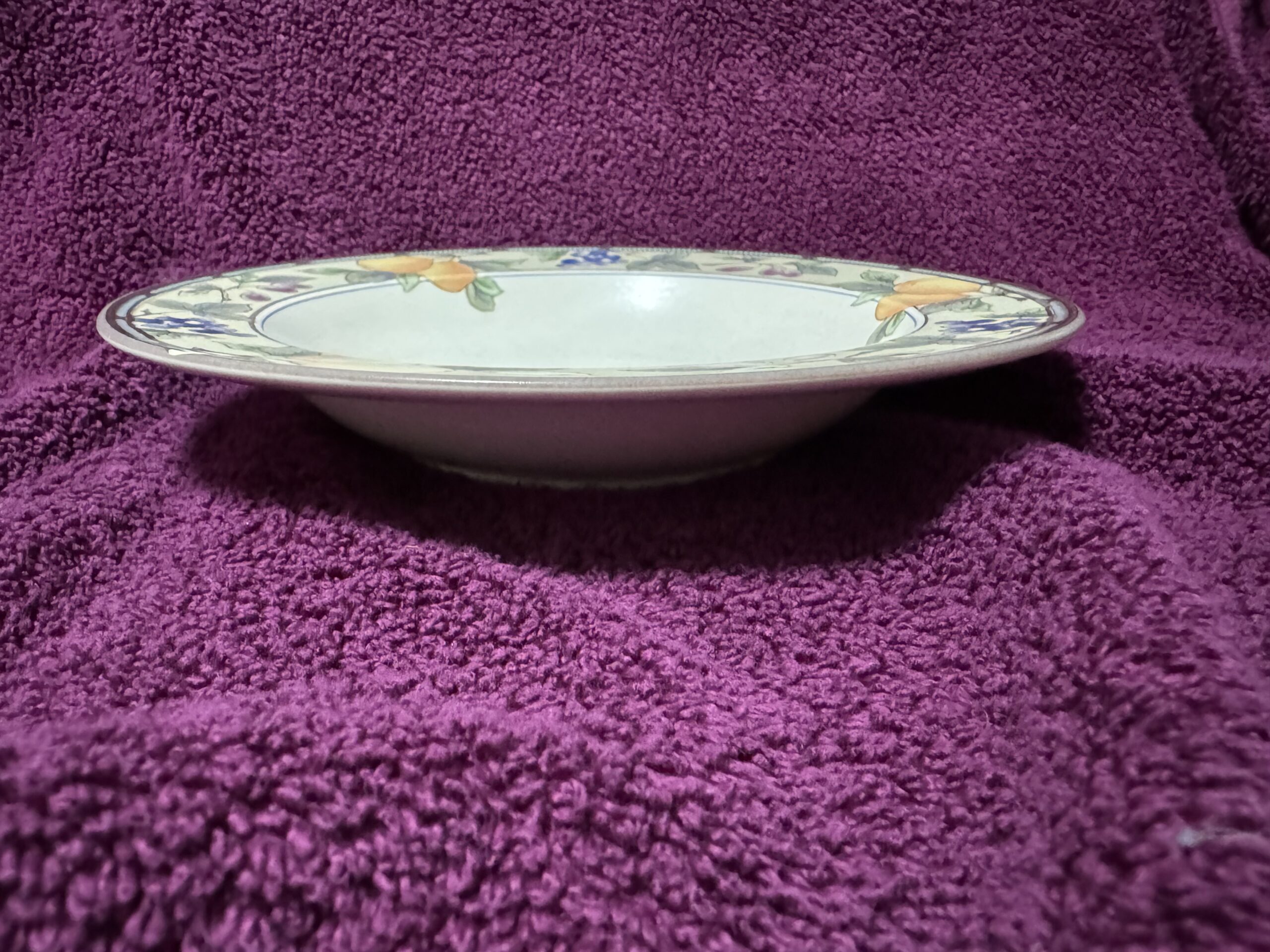
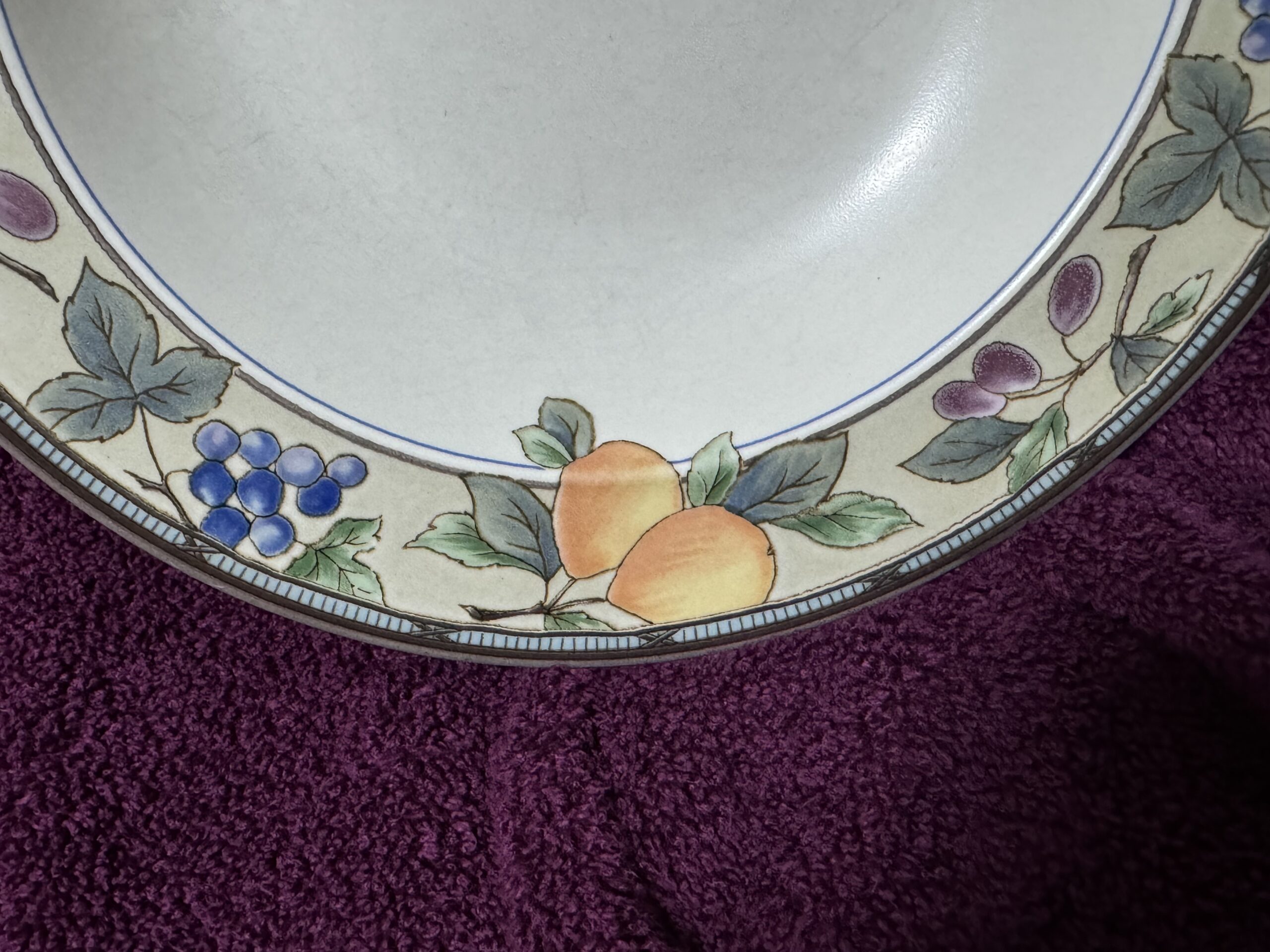
Never Miss an Important Article Again!
Join our Email List





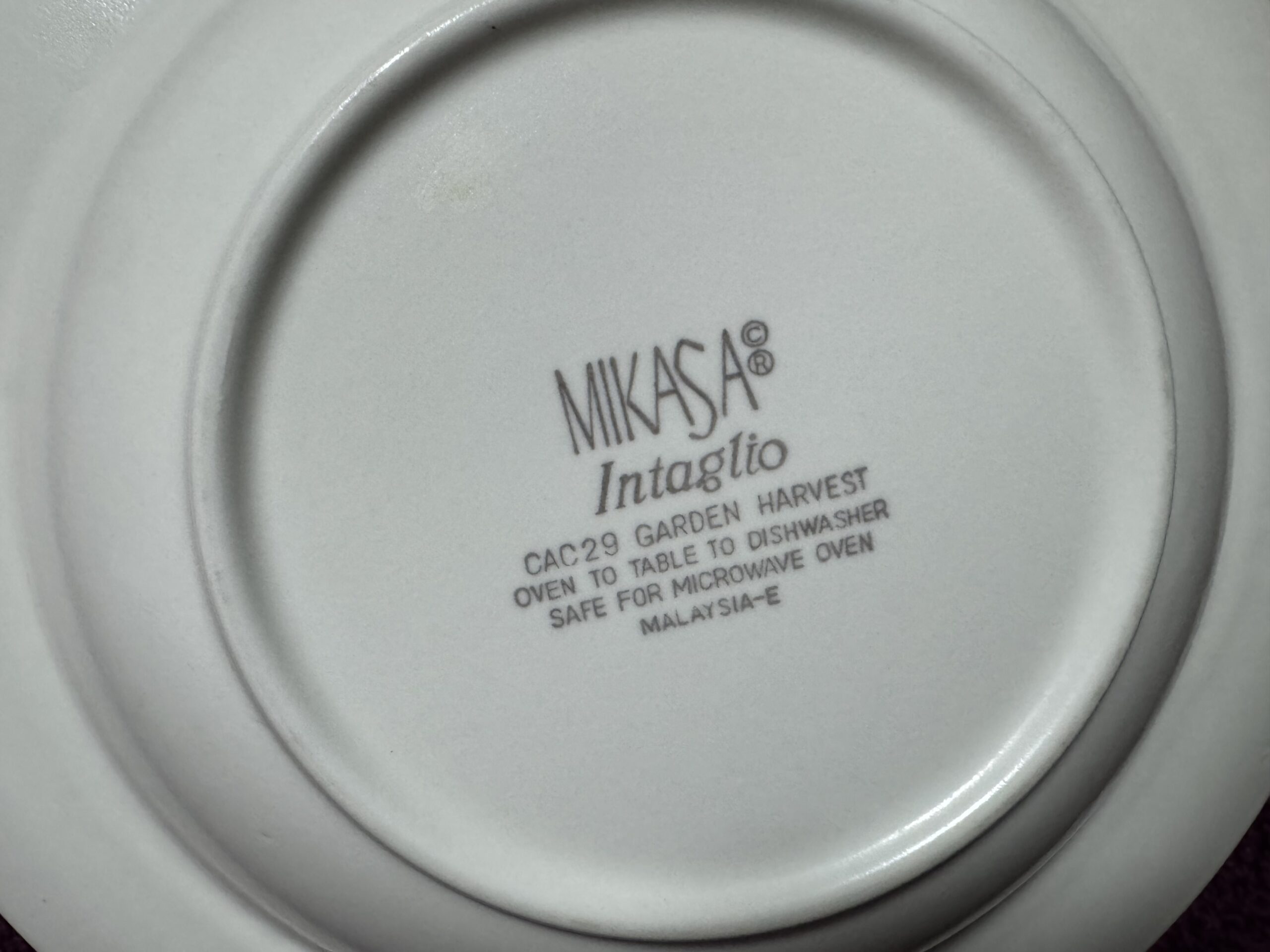
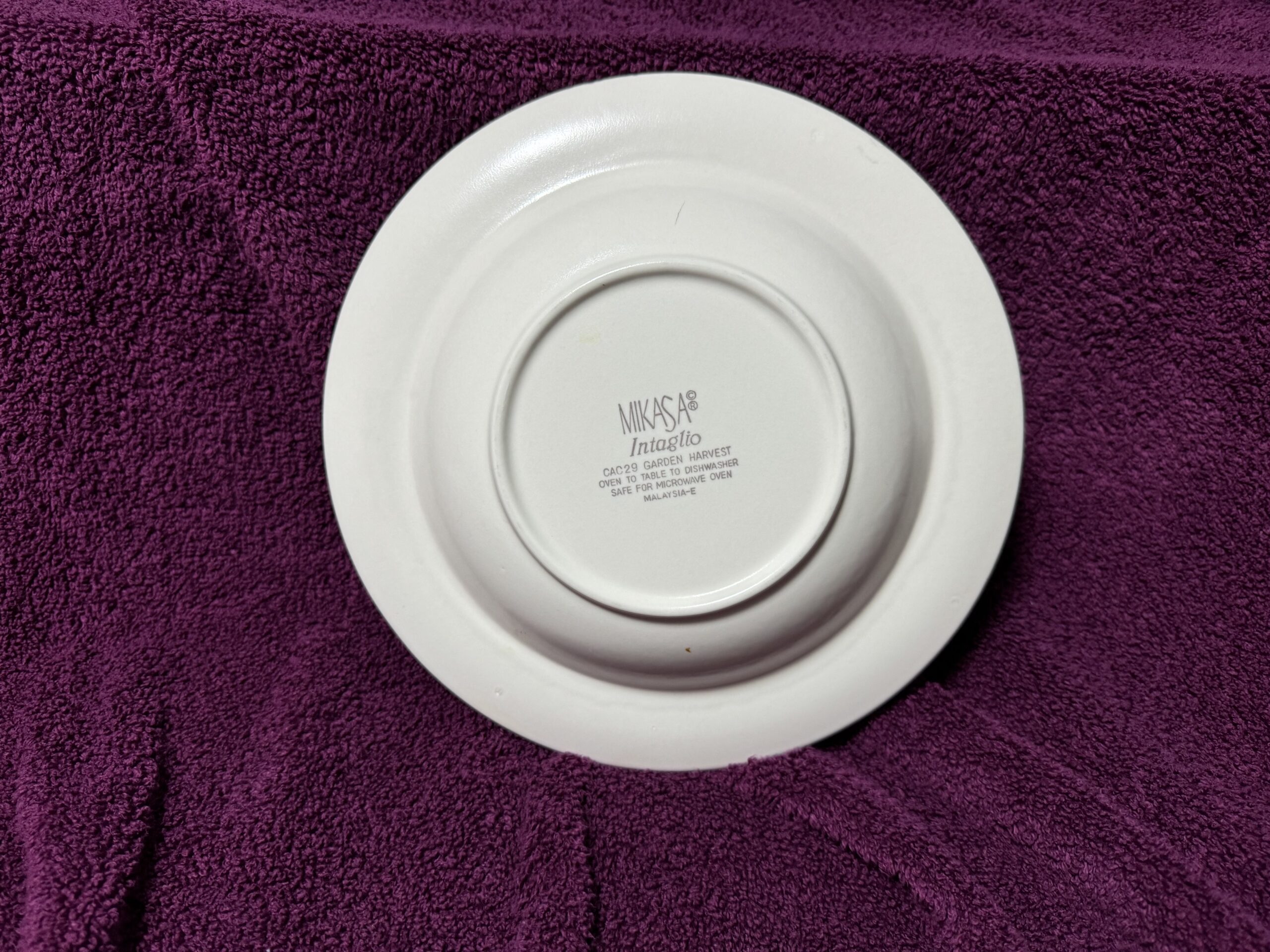

Thank you for the great wirk you do! Several family members have and Will dispose of these.
Oh my gosh! I have these Mikasa Intalglio dishes, they were a gift from my in laws in the 1990’s. I raised my kids with these dishes. How bad are these results? What does this mean?
More than that…how do I find some dishes that are actually safe?
I am just now discovering your website, this scares me to death!
Thanks for testing this pattern especially! Know so many people whose parents had these in the 90s, and my MIL has a cabinet full of hers. The more you know!
Yup! You are welcome. Especially disturbing that they felt the need to drape the high lead pattern into the food-contact surface of the bowl (with the way they did this particular design).
T